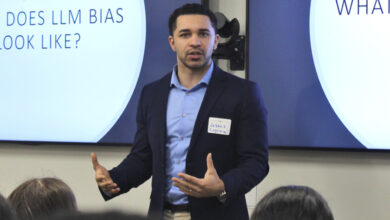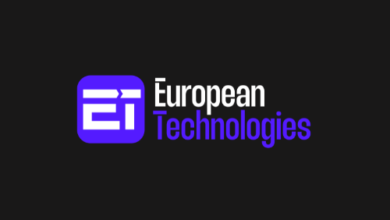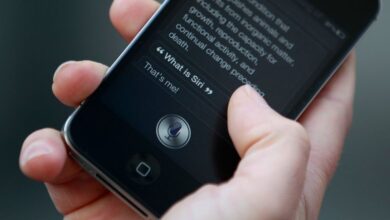The Future of Communication: AI and Machine Learning Integration

Staring at the abyss of a technological revolution AI and machine learning whose influence on the future of communication is clearly to be correlated with. This paper goes further into revealing the way privacy will be affected by the advancement of these technologies and how it will change the way we will be connected, interact with other people, and exchange information soon enough. The evolution of artificial intelligence further alters how traditional means of communication used to be, giving rise to never-before occurrences of efficiency, personalization, and innovation.
Implementing artificial intelligence and machine learning in communication systems is not merely for discussion, reality is coming in other methods, for example, customer service interaction, language translation, and content creation, which are all done through it. This article is focused on the possibilities of AI-data-driven chatbots, language analysis algorithms as well as predictive analytics to turn the existing world of communication upside down.
Insightful analysis and real-world examples are the tools that, as a part of this discussion, look into and find out how AI and machine learning are redefining the interaction between humans and between humans and machines, and also, are overcoming language barriers and improving the overall quality of communication. Come along with us on a trip that soars into the future, where AI and machine learning merge to stretch the concept of future communication towards smooth, yet intelligent and emotional or empathetic communication.
The Evolution of Communication Technologies
It has been a long and interesting journey of communication technology evolution that has completely changed how people relate and interact with one another worldwide. Every innovation right from writing to printing, telegraphy, telephone, internet, and others at some point in time revolutionized communication processes. This revolution was propelled further by the digital era through the introduction of email, SMS services, social networks as well and video chats which made distance a non-issue when it comes to live global communications. The next step in the communications boom is represented by mobile devices making communication possible anytime anywhere.
We are on the brink of yet another transition whereby AI and machine learning merge with communication technologies. These developments have the potential for more intimate encounters; automating routines and ultimately increasing productivity in communication systems. In hindsight, each technological leap forward has not only extended our means of interaction but also reinvented human engagements and partnerships themselves.
Role of AI in Communication
AI in communication is a generative factor with an effect on efficiency, personalization, and innovation. AI has overturned the way we used to interact with each other by making communication smooth through digital means via different channels. AI-powered chatbots which are these days everywhere can promptly and individually answer customer questions, thus boosting the service experience. The natural language processing (NLP) algorithms technologies have given machines the ability to decipher and react to human languages as well as jump linguistic limitations and allow international conversation to have levels never seen before through the mining of big data and by aiming at examining and analyzing the text, language translation has been moved to the next level.
Furthermore, AI has empowered the invention of predictive analytics tools that go deep into communication patterns and thereby analyze user behavior and customize content delivery, hence optimizing communication strategies. Language translation with the help of AI has filled all the gaps that exist between a vast number of linguistic communities allowing them to be in constant communication with each other. Moreover, AI-driven text generators have made it easier and faster to create customized and personalized communication packages which have stimulated marketing campaigns and advertising.
The development and growth of AI are clearly defined because they can make smart and understanding chatbots that base their answers on the situation. The development of AI by emotion recognition technologies is building the foundation for humanized communications. On the whole, AI is not only a tool for communication but also a remake facilitator of communication by reforming the methods individuals interact, team up, and share information in digital societies.
Speaking about implementing AI into business communications, we can’t but mention IVR. Interactive Voice Response (IVR) is a technique that employs artificial intelligence to automate conversations with callers via voice or touch-tone input. IVR systems have been a typical use of AI in commercial communications, providing several benefits to both enterprises and customers. The number of significant elements concerning IVR depends on your IVR service provider but the benefits are undeniable:
- Improved Customer Experience
- Personalization and Customization
- Efficient Call Routing
- Automation of Routine Tasks
- Data Collection and Analysis
- Scalability and Flexibility
AI being a highly developed communicator transfers information and resolves conflicts in a meaningful way. AI as an intermediary in the realm of communication stands for the environment in which people can interact with one another well and easily.
AI as a Communicator (Chatbots)
Chatbots are AI-driven tools that converse with users via text or speech. The AI-enabled chatbots and virtual assistants they possess use natural language processing and pure understanding so they will always have the ability to engage in online conversations in real time, and because of this support and information could be given. These characteristics no longer appear as the leading role in customer service and communication within organizations; they become a productivity-boosting-and-collaboration element within organizations.
Such are the illustrations like the virtual assistants Siri, Alexa, and customer service chatbots on the websites.
AI operates as the mediator in many issues, such as compromise and negotiation. AI algorithms have this vast ability to work through datasets that contain patterns and trends, helping in dispute resolution, and are also very good at identifying common grounds. For the legal setting, AI-enhanced mediation estates provide objective assessment and recommendations, which in turn speed the resolution of legal disputes.
AI as a Mediator (Personalized Recommendations)
Personalization algorithms are the algorithms that observe the users’ behavior, preferences, and historical data.
Along these lines, the AI system gives an introduction to personalized content, products, or services using the analysis.
Examples:
- Netflix: Movie suggestions will be based on history and ratings.
- Amazon: Proposes products purchased previously.
- Google: Modifies query outcomes and advertisements linked to user interests.
AI is involved in multilingual communication on a very high level which leads to the removal of language barriers with the long use of translation and interpretation tools. Human communication is facilitated by AI technology, which makes simultaneous translation possible, thus, promoting intercultural understanding and making collaborative ventures between national players across the globe.
Examples of successful AI-driven communication systems
Various successful AI-powered communication platforms have transformed the way we engage and connect. Here are some noteworthy examples:
AMP (Automated Material Processing)
AMP designs robotic systems for recycling sites.
Their AI-powered robots can swiftly distinguish between materials (kind, shape, texture, color, logos) and effectively process goods on conveyor belts.
iRobot (Roomba)
iRobot created Roomba, a smart vacuum that utilizes AI to scan room sizes, recognize obstructions, and recall effective cleaning paths. Roomba requires no human assistance to clean floors.
Hanson Robotics (Sophia)
Hanson Robotics builds humanoid robots with advanced AI.
Sophia, their social learning robot, interacts effectively through natural language and facial gestures.
Softbank Robotics (Pepper)
Pepper is a humanoid robot with an “emotion engine” that can recognize facial expressions and fundamental human emotions. It’s used in various contexts, including customer service and interaction.
These examples show how AI improves communication across several areas, including recycling facilities, domestic cleaning, and social interactions.
Challenges on the Horizon
However, the interplay of AI and machine learning in communication is never without its share of challenges and ethical implications. Here are a few things to consider:
1. Data Privacy and Security: One of the biggest concerns about the use of AI in communications is that it could lead to misuse or mishandling of sensitive data. The possibility of privacy breaches, data leaks, and unauthorized access to personal information looms large as AI systems need huge amounts of data to work effectively.
2. Bias and Fairness: The biases inherent in the training datasets determine how biased or objective an AI algorithm can be. For example, language translations generated by an AI can be discriminatory while content recommendations may have a certain slant. Dealing with bias in AI systems calls for careful selection of data, transparent algorithms, and ongoing vigilance regarding fairness and inclusion.
3. Transparency and Accountability: Understanding how decisions are arrived at or actions taken can be difficult because of the complexity embedded within AI algorithms. Users lack trust as a result considering that most stakeholders do not understand what goes on behind closed doors when it comes to these systems. Establishing clear guidelines for AI decision-making processes, ensuring accountability for system outputs, and providing explanations for algorithmic decisions are crucial for building trust and credibility.
4. Job Displacement and Automation: The extensive employment of AI for communications may bring about job displacement and reshape the landscape of the labor force. As artificial intelligence systems automate repetitive tasks and simplify procedures, some industries become vulnerable to vacant jobs. Therefore, taking into consideration the social and economic consequences of deploying AI is necessary and making plans for worker re-skilling and up-skilling.
5. Ethical Conduct in AI: The scope of ethical aspects surrounding artificial intelligence-based communication is large including but not limited to algorithmic accountability, consent transparency as well as human involvement. To ensure ethical design and deployment of AI systems there must be adherence to codes of ethics, regular audits that help identify weaknesses or shortcomings within the system, and stakeholder engagement that helps address possible dilemmas within a given context or even beyond it.
Navigating the AI revolution
It’s obvious that AI technology is here to stay and will have a significant influence on how we interact in the future. As is typically the case when addressing AI and communication applications, the technology works best with people and will not be able to fully replace the necessity for human connection, particularly in communication settings.
There are several advantages to introducing AI into our daily lives, including the ability to improve and streamline existing communication procedures.



